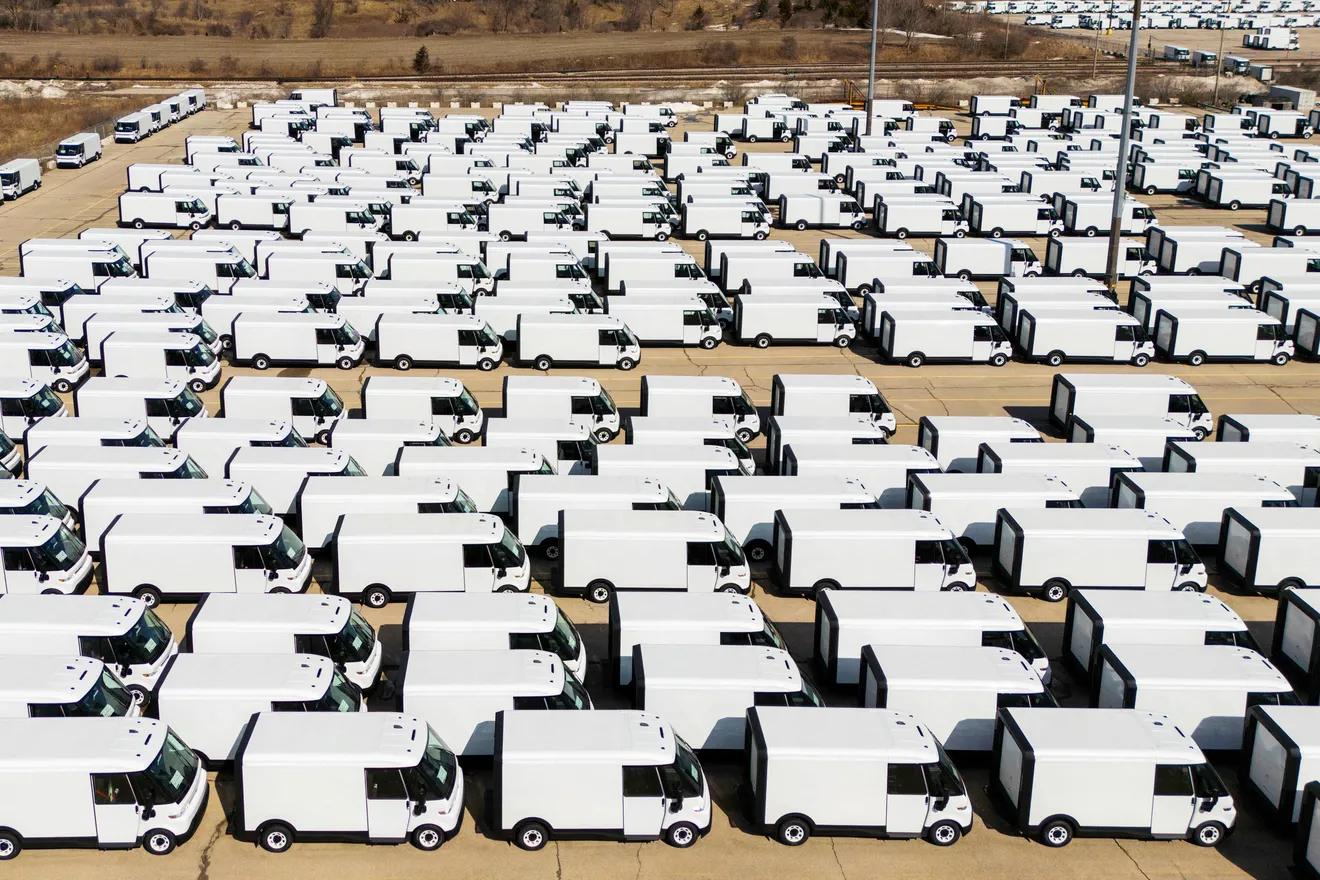General Motors’ all-electric CAMI Assembly plant in Ontario is halting production of BrightDrop delivery vans, Unifor said Friday. Unifor is Canada’s largest private sector union, representing 320,000 workers.
The company will initiate temporary layoffs starting April 14 and production will stall for three weeks, Mike Van Boekel, plant chair for Unifor Local 88, which represents hourly workers at CAMI, told the Detroit Free Press.
Workers will return for two weeks in May for limited production, and then the factory will close for another 20 weeks. During this downtime, GM plans to complete retooling work to prepare the facility for production of the 2026 model year of commercial electric vehicles.
CAMI Assembly had run two shifts while producing Chevrolet BrightDrop vehicles. When production resumes in October, Unifor said the plant will operate on a single shift for the foreseeable future — a reduction expected to impact 450 workers.
“This is devastating for our members,” Van Boekel told the Detroit Free Press. “We are losing these shifts indefinitely.”
About 1,200 Local 88 members work there assembling Chevrolet BrightDrop EVs and constructing battery modules and packs.
“This is a crushing blow to hundreds of working families in Ingersoll and the surrounding region who depend on this plant,” Unifor National President Lana Payne said in the statement. “General Motors must do everything in its power to mitigate job loss during this downturn, and all levels of government must step up to support Canadian autoworkers and Canadian-made products.”
GM Canada confirmed CAMI is making operational and employment adjustments to balance inventory and align production schedules with current demand.
“GM remains committed to the future of BrightDrop, and the CAMI plant and will support employees through the transition,” the company said in a statement emailed to the Free Press. “This adjustment is directly related to responding to market demand and rebalancing inventory. Production of BrightDrop and EV battery assembly will remain at CAMI.”
Many hurdles
GM’s struggles with BrightDrop inventory come less than a year after the company folded the commercial vans into its Chevrolet brand in a bid to boost its performance.
GM has tried and failed to gain ground against competitors, including Ford and Rivian, in the electric van space, an effort further hindered by the vehicle’s high price tag. Sam Fiorani, vice president of global vehicle forecasting at AutoForecast Solutions, said the opaque trade environment spurred by President Donald Trump’s vacillating tariff announcements hardly aided the company’s U.S. sales projections.
“If there’s a tariff with Canada, how do you build any vehicle of volume there to be sold in the U.S.?” Fiorani asked.
Tariffs with Canada currently stand at 25%, though the auto industry is still seeking clarity about whether vehicles and parts compliant with the U.S.-Mexico-Canada Agreement are included.
GM produces BrightDrop 400 and BrightDrop 600 vans at CAMI Assembly, Canada’s — and GM’s — first full-scale all-electric vehicle manufacturing plant, which required massive investment to retool for EV production, including funding support from both governments. As the Free Press first reported, a glut of those slow-selling delivery vans has built up on both sides of the U.S.-Canada border.
CAMI produced 3,500 electric Chevrolet BrightDrop delivery vans last year — compared with nearly 200,000 Chevrolet Equinox crossovers the plant produced five years earlier — according to the Automotive News Data & Research Center. Of those, GM sold only 1,529, compared with Ford’s 12,610 E-Transit vehicles and Rivian’s 13,243 EDV.
GM reported sales of just 274 Chevrolet BrightDrop vehicles so far this year, up 7% from 256 sold in the first quarter of 2024.
Last month, a Free Press photographer captured images of hundreds of vehicles lining a Flint storage lot. Reuters published similar photos from CAMI in Ingersoll, Ontario.
CAMI reopened in late 2022 following a retooling period outfitting the facility for electric vehicle production. Production stalled again this year with a scheduled two-week shutdown to “align production schedules and balance inventory,” a GM spokesperson said in a statement.
Part of the reason BrightDrop sales are lagging in the U.S. is the comparatively high price tag to nearest competitors. Before incentives, the vehicles cost about $74,000. Ford’s E-Transit van with extended battery range, for example, is $51,600 — more than $20,000 cheaper — even before applying incentives.
Falling far short of projections
GM launched BrightDrop in 2021 as a wholly owned subsidiary with expectations its revenue would top $10 billion by 2030 with low-20% profit margins.
BrightDrop CEO Travis Katz said in 2022 that the company expected to be making 50,000 trucks a year starting in 2025 and bring in “a lot of revenue.” Katz left the company in late 2023 without specifying why as GM began reorganizing BrightDrop to function less independently and reduce costs.
“Make no mistake — the world is moving rapidly towards electrification. If Canada and the U.S. hit pause now, we may never catch up,” Payne said in the statement. “We risk surrendering our future unless we act decisively to support our own industry.”
The economics, and the lack of charging infrastructure, likely made it difficult for the company to find a foothold in the U.S. market, Fiorani said.
“It should be easy to convince a business that you can drive this thing. On paper, it’s a good idea. But business owners that are not used to taking risks won’t buy something they don’t understand fully,” he said. “In early 2020, when everybody was delivering things directly to their homes, this was a perfect vehicle for that market.”

